Tokyo, Hakone, Kyoto, Nara, Osaka, Hiroshima
Tour Code: TCT-Japan-05
Tour Type: Private Tour
Best Travel Time: Spring Sakura season is from Mar 20 to Apr 13 in 2019.
From $ 1789
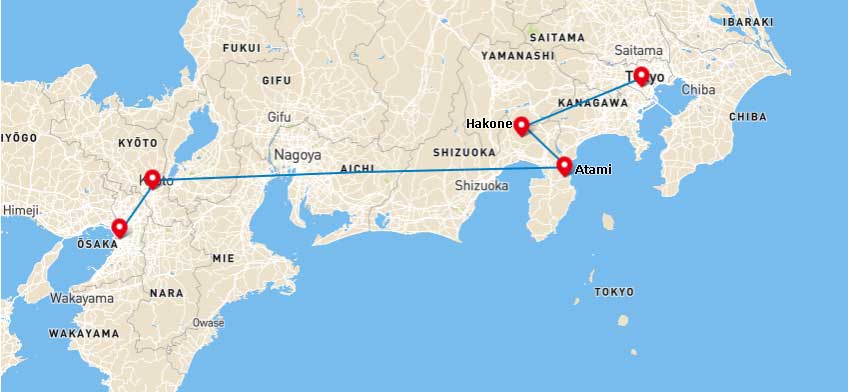
 Enjoy full cherry blossom in Japan
Enjoy full cherry blossom in Japan
 Exciting experience of Shinkansen in Japan
Exciting experience of Shinkansen in Japan
 Explore Hiroshima where the first A-bomb was dropped
Explore Hiroshima where the first A-bomb was dropped
 Visit the world heritage like Itsukushima Shinto Shrine and Mt. Fuji
Visit the world heritage like Itsukushima Shinto Shrine and Mt. Fuji
| Day | Destination | Highlights |
| 01 | Arrival Tokyo | Transfer service to hotel by sharing shuttle bus, normal check-in time is from 15:00. |
| 02 | Tokyo | Ueno Park, Ueno Toshogu Shrine, Hanazono Inari Shrine, Ameyoko old market, Meiji Jingu, Tokyo Metropolitan Government Buildings(Observatory in 45th Floor) |
| 03 | Tokyo Hakone Hakone Kyoto Kyoto |
Owakudani Valley, Sounzan to Togendai by Hakone ropeway, Mt. Fuji, Lake Ashi cruise, Head to kyoto by Shinkansen Bullet Train |
| 04 | Kyoto | Kiyomizu-dera Temple, Nijo-Castle, Fushimi Inari Taisha Shrine |
| 05 | Kyoto | Sanjusangen-do Temple, Kinkaku-ji Temple, Arashiyama,Sagano Bamboo Grove, Tenryu-ji Temple, Togetsukyo Bridge |
| 06 | Kyoto Nara Nara Osaka Osaka |
Todaiji Temple, Nara Deer Park, Fushimi Inari Shrine, Take train to Osaka with Shinkansen |
| 07 | Osaka Hiroshima Hiroshima |
Miyajima, Itsukushima Shinto Shrine, Peace Memorial Park and Museum, A-bomb Dome |
| 08 | Departure Osaka | Transfer service to KIX airport by sharing shuttle bus/airport limousine. |
Meals: No Meal
Accommodation: In Tokyo
Welcome to Japan! The Spring Sakura season of this year is from Mar 20 to Apr 13. Our local representative will wait for you at the NRT/HRD airport and our driver will transfer you to hotel. Check in hotel and enjoy your leisure time.
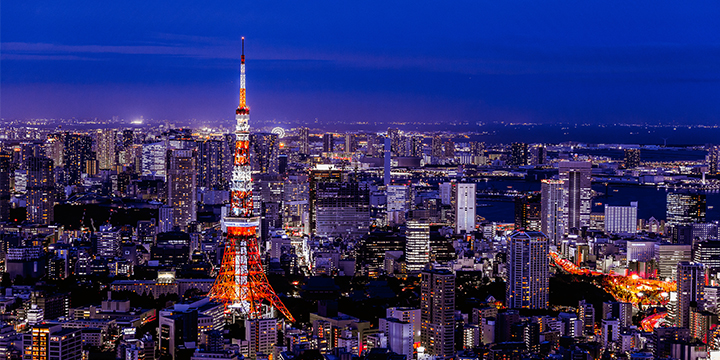
Tokyo City View
Meals: Breakfast
Accommodation: In Tokyo
Today is your time to explore the Tokyo city. Our local guide will meet you at the lobby of the hotel. First we will go to the Ueno Park, famous for being the best palace to enjoy the cherry blossom among the local residents. We will walk around in Ueno Park and visit Ueno Toshogu Shrine and Hanazono Inari Shrine. Then we walk to the Ameyoko old market, an open-air market with approximately 164,227 square feet. Once a black market, it has become one of Tokyo’s most vibrant places with a huge array of food, clothing, jewelry, toys and cosmetics. You will be recommended to the local restaurant for lunch.
After lunch time, we head to the Meiji Jingu, a large Shinto shrine in Tokyo, built in 1920 to venerate the Emperor Meiji (1852-1912) under whose reign Japan became a modern state. Surrounded by the huge Yoyogi Park, Meiji Jingu is in a green setting - almost with a rural calm feel, making it the most visited religious site in Japan.
After it, we get to the Observatory in 45th floor of the Tokyo Metropolitan Government Buildings (TMGB) to enjoy the 360-degree Tokyo city view including the Tokyo Tower and Mt. Fuji if the weather permits.
Tour ends by getting back to hotel with your guide.
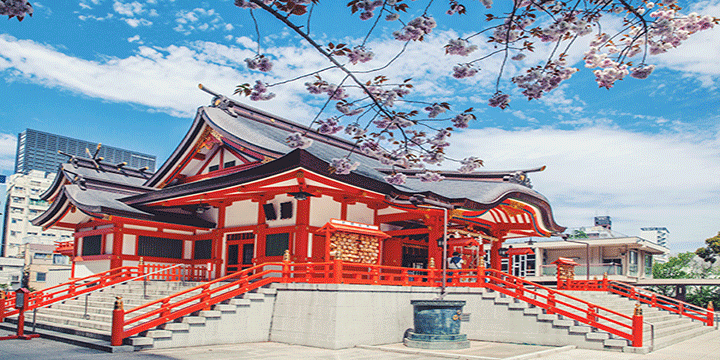
Ueno Park Garden Inaba Shrine
Meals: Breakfast
Accommodation: In Kyoto
Today we will head to Hakone by taking the Express train (Romance Car View wide, 1.5hrs). We arrive at Hakone Yumoto station, we take Hakone Ropeway to Owakudani Station, we could visit the Owakudani Valley there for around 10 minutes and taste the special black onsen egg there. Then we continue to take the Hakone Ropeway to Togendai Station(16mins). The peaceful Lake Ashi will come into our sight and we take Lake Ashi cruise to see the splendid scenery from an observatory deck, Mt.Fuji, Gulf of Sagami and Lake Ashi when the weather is clear.
We get back to Odawara station for the Shinkansen(2hrs) to Kyoto without guide. Our Kyoto guide will meet you at Kyoto Station and help you to check in hotel.
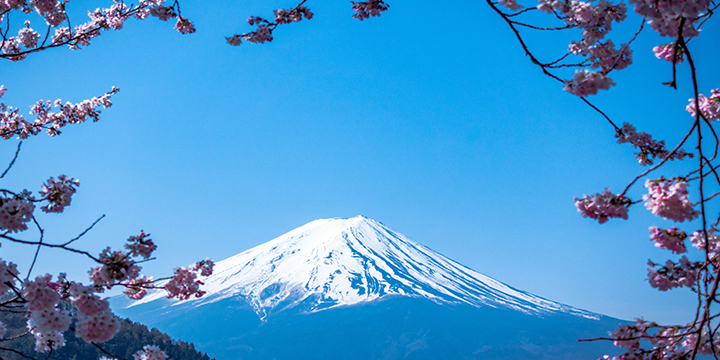
Mt Fuji
Meals: Breakfast
Accommodation: In Kyoto
Today we are going to explore the historical and cultural Kyoto by visiting world heritages Kiyomizu Temple, Nijio-Castle and Fushimi Inari Taisha Shrine.
Kiyomizu Temple is the oldest temple in Kyoto, known for "stage of the Kiyomizu". It was listed as one of the world cultural heritage sites in 1994. Stage of the Kiyomizu (clear water stage) is Japan national treasure level cultural relic with the main hall constructed over a cliff and featuring a large wooden veranda supported by 139 pillars, each 49 feet high. The cherry blossom is in full bloom in spring and red maple is valiant in autumn here. The Yinyu waterfall under the stage of Kiyomizu, whose three sources respectively represent health, study and marriage, is where many people line up to receive water for drinking and praying.
Nijo Castle is in north of downtown, once Kyoto imperial castle with stunning Tamami rooms with beautiful paintings of the Edo period. It's forbidden to take pictures indoor, but you'll come across banquet halls and even the Shogun's private apartments where his wives lived. Walking in the gardens of Nijo castle is very nice: the lawn, trees and plants are well maintained. As a bonus, an alley strewn with Sakura is of course to visit during spring when they blossom.
Fushimi Inari Taisha Shrine is the head shrine of about 30,000 Inari shrines across Japan, with a compound of 870,000 square meters. This shrine is dedicated to the rice lotus god to bless the commercial prosperity, financial success and grain prosperity. It is renowned especially for hundreds of the dense vermilion Torii gates is one of the representative landscapes in Kyoto and also appears in the film “Memoirs of a Geisha”, lining up along the pathway to Mt. Inari, each of which bear the name of its donor.
Tour ends by getting back to hotel with your guide.
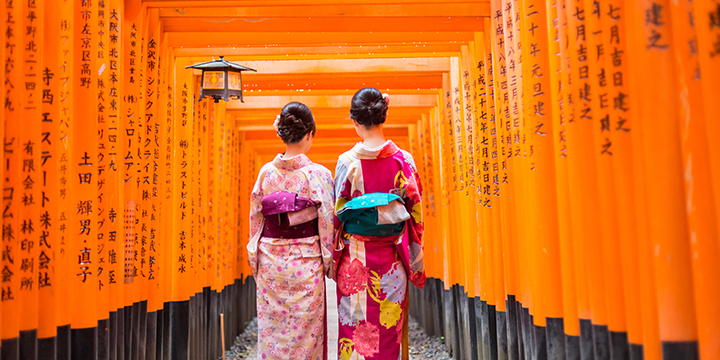
Fushimi Inari Taisya
Meals: Breakfast
Accommodation: In Kyoto
Today we will continue to be impressed by the world famous sights in Tokyo. They are Sanjusangen-do Temple , Kinkaku-ji Temple, Arashiyama.
Kinkaku-ji Temple means the “Temple of the Golden Pavilion”. Built in 1379, it was originally the mountain villa of shogun, and later changed into the Buddhist temple "Bodhi house". This high profile and gorgeous temple, and the mirror lake pool in front of each other, become one of the most classic scenes in Kyoto. KinKaku-ji Temple is a three-story pavilion, the first floor for the water court; The second layer for chao Yin hole, dedicated to the goddess of mercy; On the third floor is a square hall dedicated to the three Maitreya Buddha statues.
Sanjusangen-do Temple(33rd hall) is the main hall of the lotus king courtyard, which refers to "the hall with 33 sections of space between the beams and pillars". It is the longest wooden building in the world, as long as 120 meters, with the amazing Guanyin group inside. Its subjective image is a thousand-hand guanyin sitting statue, which is also regarded as a national treasure of Japan. There are 1001 of upright Guanyin statues in the hall, carved out of cypress wood and wrapped in gold foil. Each statue has more than 20 pairs of arms. It is also the Japan national treasure will amaze anyone fist eyes on. We will continue to Arashiyama by train for less than 15mins. There are not only rich cultural attractions, but also natural scenery changing with the seasons and small trains restoring ancient ways in this area.
There are many ancient temples, shrines, and breathtaking Sagano Bamboo Grove. Among them, Tenryu-ji Temple is a world heritage site, the headline attraction in Arashiyama, a sprawling Zen temple with one of the finest gardens in Kyoto and wonderful mountain views. There is a famous bamboo forest path is about 500 meters long leading to Tenryu-ji Temple. Walking through the bamboo forest, you can hear the natural sound of the wind blowing through the bamboo leaves. This sound is also rated as one of the 100 best sounds to keep in Japan. It is also the place where Ang lee shot “Crouching Tiger, Hidden Dragon”. Togetsukyo Bridge spans the Hozu River, which usually has at least a bit of water in it but being a great picture shooting area.
Tour ends by getting back to hotel with your guide.
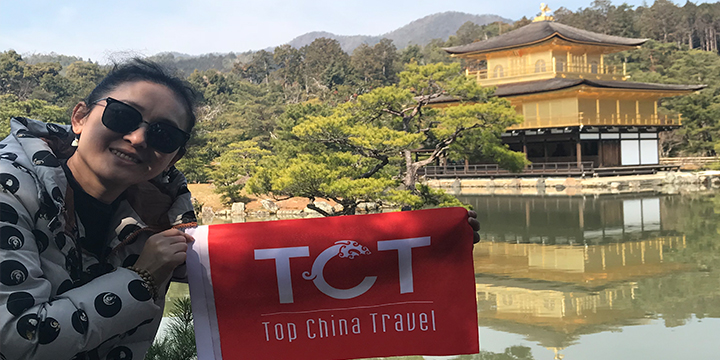
Kinkaku-ji Temple
Meals: Breakfast
Accommodation: In Osaka
Today we will take a local train(about 45mins) to Nara for the Todai-ji Temple(Great Buddha),Nara Deer Park, Kasuga Taisha Shrine. Once we arrive Nara station, we can take a public bus directly to Nara Deer Park.
Nara Deer Park is in the front of Todai-ji Temple. There is a walking street to the temple where we could see some deer leisurely sitting on the ground, freely walking and wishing passers-by feeding them by bowing heads.
Todai-ji Temple is the head temple of Japanese temples. It was built in 752 by emperor Seibu in order to worship the Giant Buddha and was listed as a world cultural heritage site. Two fires in history destroyed the building. The present building was rebuilt in 1692. It is only two-thirds the size of the original building. The great Buddha hall in the temple is the largest wooden ancient building in the world. Inside, there is a 16-meter-high Buddha statue of lushana, which is the largest bronze Buddha statue in the world. It’s really a place where highly worthy a visit.
We will take a scenic bus(less than 5mins) to the Kasuga Taisha Shrine nearby. It was established at the same time as the capital and is dedicated to the deity responsible for the protection of the city. Kasuga Taisha is famous for its lanterns, which have been donated by worshipers. Hundreds of bronze lanterns can be found hanging from the buildings, while as many stone lanterns line its approaches. The lanterns are only lit twice a year during two Lantern Festivals, one in early February and one in mid August. There are many smaller auxiliary shrines in the woods around Kasuga Taisha, twelve of which are located along a path past the main shrine complex and are dedicated to the twelve lucky gods. Among them are Wakamiya Shrine, an important cultural property known for its dance festival, and Meoto Daikokusha, which enshrines married deities and is said to be fortuitous to matchmaking and marriage.
At the end, our guide will help you get on the Shinkansan to Osaka for 15mins, the local guide in Osaka will meet you at the station and check in hotel with you.
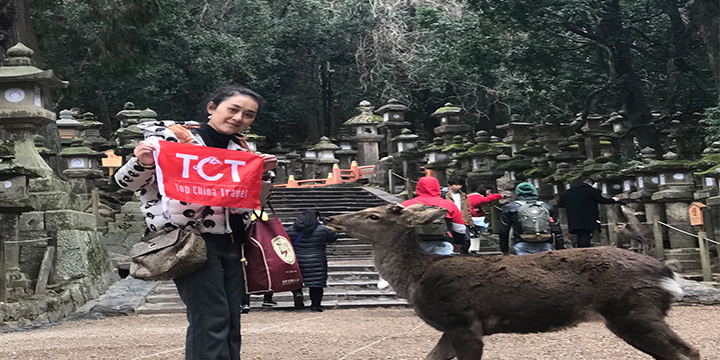
Nara Deer
Meals: Breakfast
Accommodation: In Osaka
Today our guide will meet you at the hotel and head to Shin-Osaka station for Hiroshima with bullet train. The first visit on arrival is Miyajima, which is known as one of the three most beautiful scenic spots in Japan. We take a boat from the main land to a small sacred island, on whose beach stands the vermillion color Torri gate. The gate and main hall of the shrine look floating in the water when the tide is high. Itsukushima Shinto Shrine is set up over the sea. You can find many shops and restaurants on the island. Enjoy lunch on the island could be a nice choice.
When we return to central Hiroshima by boat and train, we will visit Peace Memorial Park and Museum and A-bomb Dome that is nominated as World Heritage of UNESCO. We will return to Osaka by bullet train.
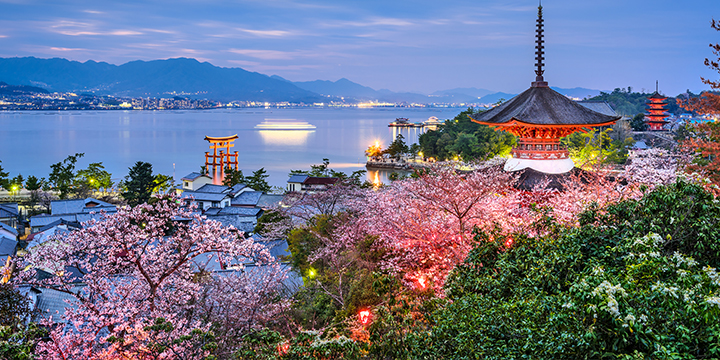
Miyajima
Meals: Breakfast
Our local representative will meet you at the lobby of the hotel and transfer to the airport for your flight to next destination or home.
Note:
1. Spring Sakura season is generally from Mar 20 to Apr 13 .
Service ends.
NOTE:
1. The price listed is just for reference. It is suitable for a group of 6 pax with accommodation in local 4 star hotels.
2. If the tour just interests you, please just click the buttom of [Enquire This Tour] to send your inquiry to us.
3. If the tour can not meet your needs, please click the below buttom of [Create My Trip] to share your idea.
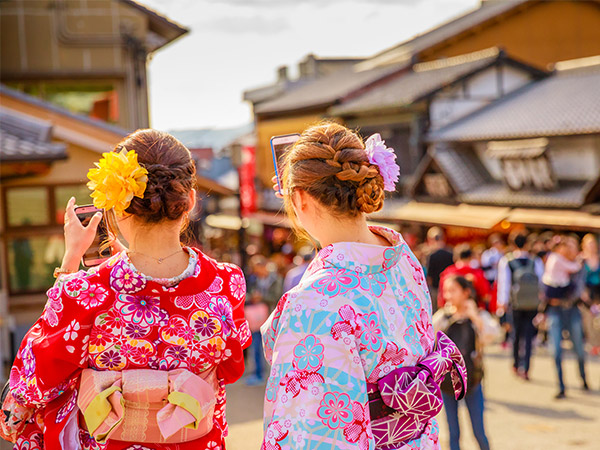
4 Days Tokyo & Fuji Tour
Tokyo, Hakone
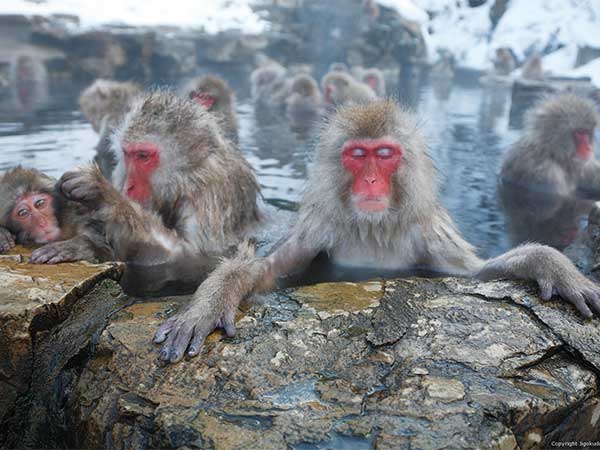
7 Days Japan Winter Discovery
Kyoto, Hakone, Tokyo
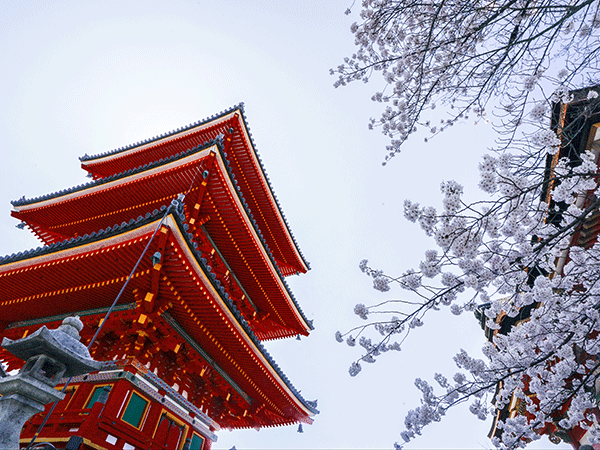
11 Days China and Japan Discovery
Beijing, Xi'an, Shanghai, Tokyo, Mt. Fuji